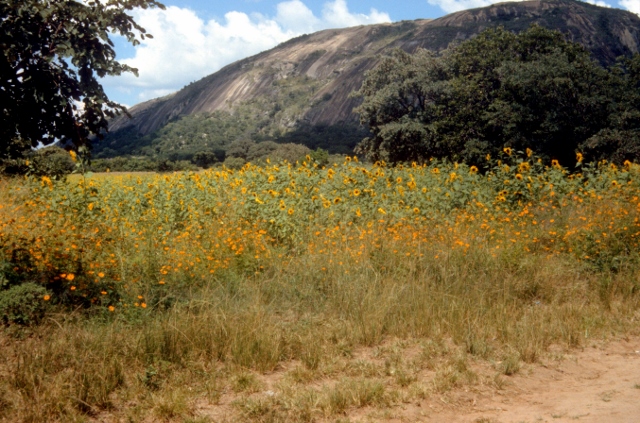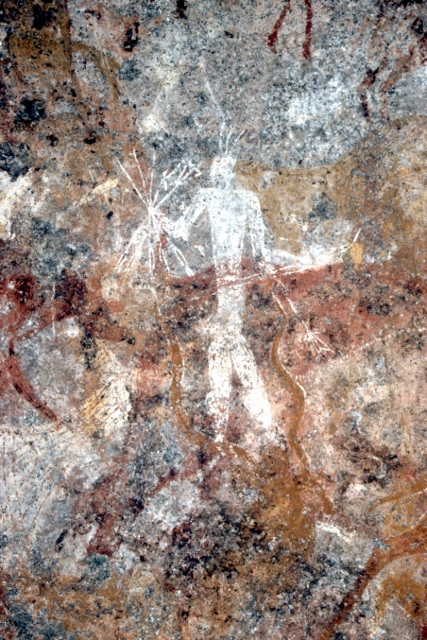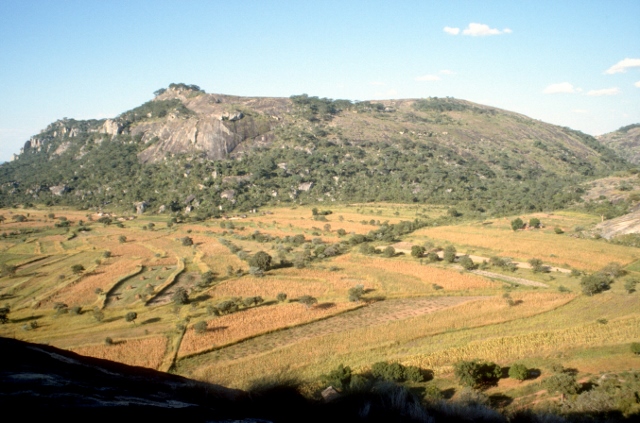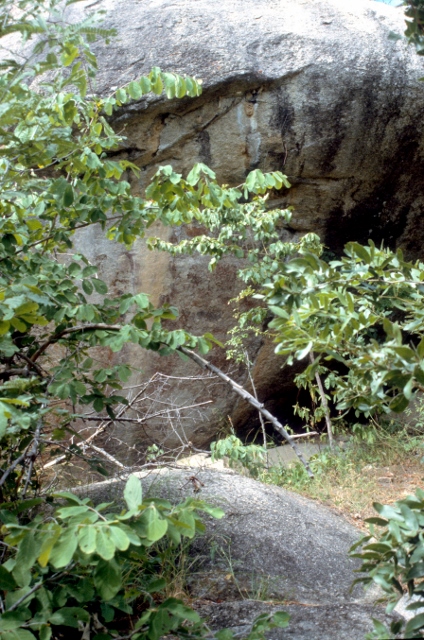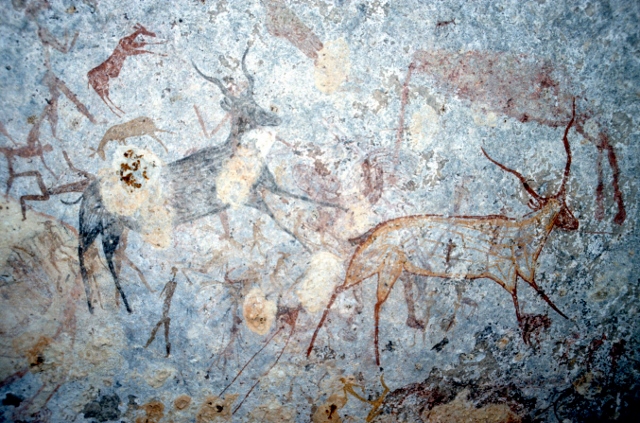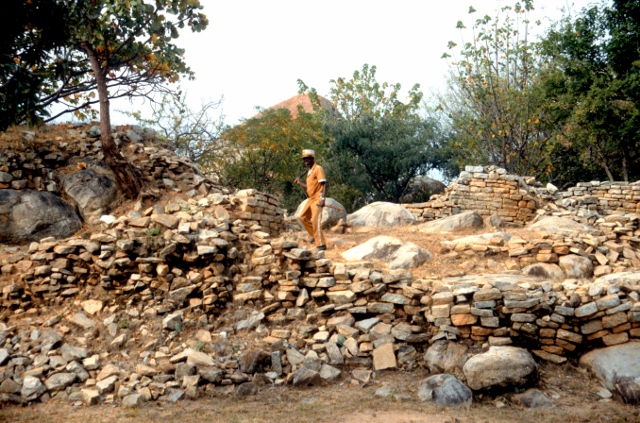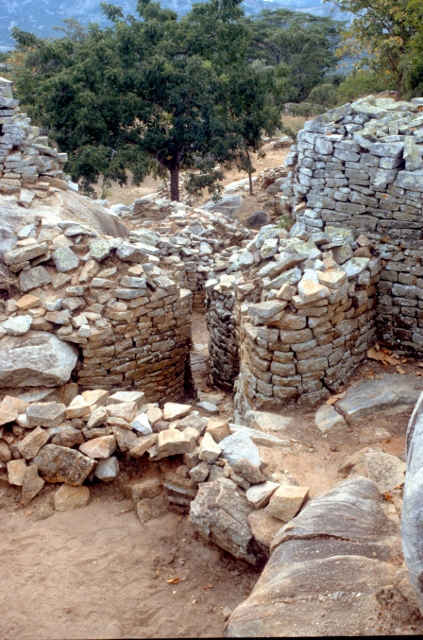April 6th – upcountry: Mashonaland
As soon as you get outside the relative development of Harare, things change. Tarmac turns into gravel roads, dusty and occasionally potholed. Traffic is reduced to a trickle, mostly people walking – men mostly dull dressed, but women wear colourful cloths. The occasional village consists of round huts with thatched roofs.
The landscape is mostly granite country, isolated bare hills of exposed granite rock, green pastures in between. And sun flowers, fields and fields of sun flowers, a fabulous sight.
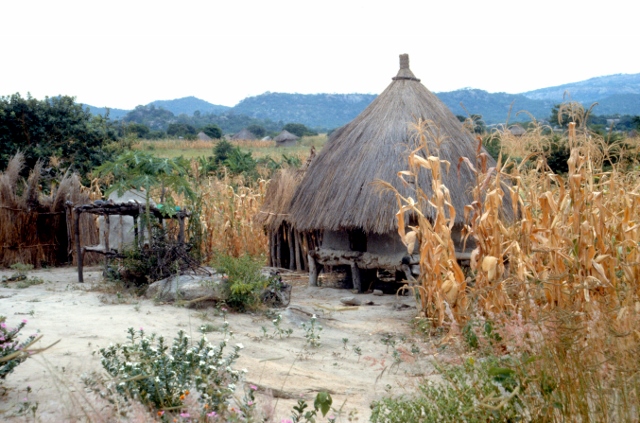
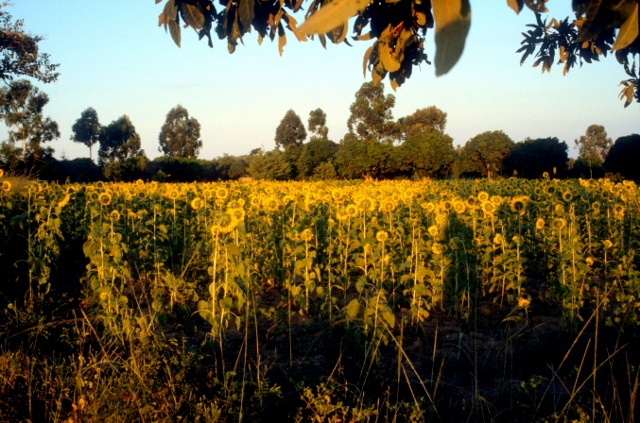
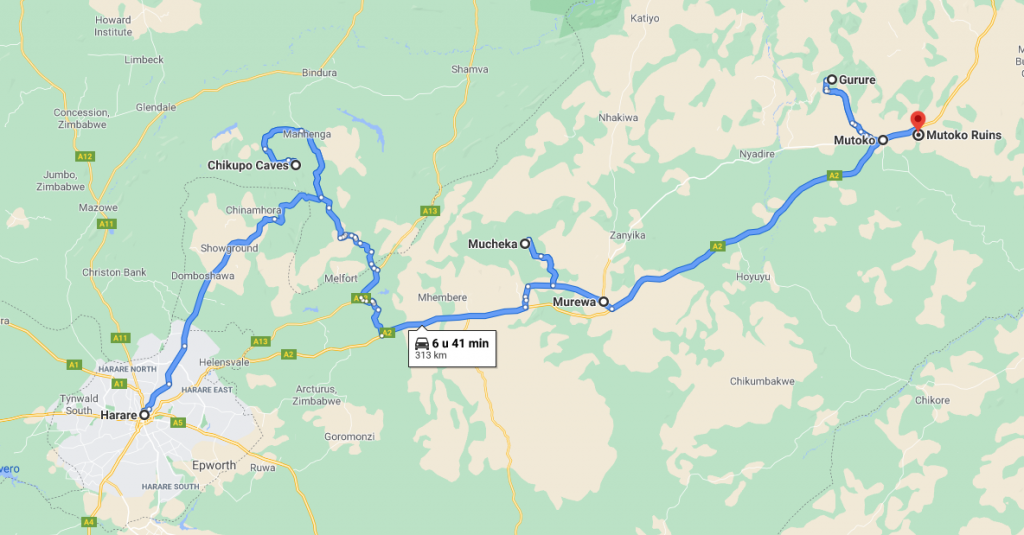
With the directions from “The Painted Caves”, a book about Zimbabwean rock art by Peter Garlake, I managed to find the village closest to the Chikupu caves, where a local guide was willing to show me the way up – he on his bare feet, I on my smart sneakers; he considerably faster than I. And like during my first visit to Zimbabwe, I was once again impressed. Not only by the paintings, which show a great variety of subject matter, many different animals, lines of hunters and dancers, in a range of colours, but also by the experience – being up this mountain, overlooking the countryside probably not much different than the artists who crated these paintings perhaps 10,000 years.
(here are more photos of Chikupu Cave paintings)
After having admired the caves, and my guide’s cow, his dogs, his tomatoes and his maize, I continued. The next cave to be visited was at the village of Mucheka, where two teachers from the local school were happy to accompany me. Together with four farmers, who decided to come along as well – in fact, they had never been to the caves themselves, yet, an illustration of how the local people view their own cultural heritage. These are Bushmen paintings, or, more correctly, San people paintings, ethnically unrelated to the Shona majority in Zimbabwe, and thus of no interest. In any other country an attraction like this would be signposted, and no doubt entry fees charged, but here they are of no consequence. The upside is that you cannot find a more authentic experience, of course.


(here are more paintings of the Mucheka Cave)
I had identified a hotel in the small town of Muwera. Unfortunately, the hotel was closed, the only business remaining being a bottle shop, local dialect for pub. But in fact it is not much more than a bottle shop, where you buy your drink in a bottle, and exchange the empty for a full one afterwards. So I drove on to Mutoko, instead, another 60 km further NE.
April 7th – the Mutoko hotel
When I arrived at the Mutoko Hotel, it was almost dark. Nobody at the reception, so I entered the bar, where there were some twenty people, all very drunk, loudly discussing the problems of the world, and in particular the problems concerning themselves. The public bar area was separated from the area behind the counter by a solid metal rack, with small windows through which the bottles were handed out – once again, no glasses, here, only bottles. Obviously, they do expect regular trouble with their customers, here. The girl behind the counter was the only one sober and turned out to be in charge of the whole establishment.
With plenty of rooms available – in fact, I think I was the only guest -, the girl gave me clearly the nicest room she had, a kind of bridal suite, with en-suite bathroom and a large double bed. When I asked what the mosquito net was for (Zimbabwe is a high country, as far as I know malaria-free), she laughed and said something like “wait and see”. By now it was pitch dark, and the only light in the room was the bulb at the ceiling; the bathroom didn’t have any light. With my torch I inspected the bath, which was crawling with cockroaches: I decided against taking a bath. And after I had also repaired the flush of the toilet, I decided to heed the advice of the bar cum hotel girl, and park my car somewhere else. “For security”, she had said, and with the drunken bunch inside I could imagine.
I put the key in the ignition, turned in around, and… nothing, no sound. Shit! Car broken down! Now I am not a great car mechanic, but decided to first open the bonnet and have a look. Maybe it is smithing simple, a loose cable or a spark plug. In no time I got help from some six locals, all very drunk, all with beer bottles in one hand and a cigarette in the other, happily bending over the engine with me. Hmmm. I politely waved them away, before they could do even more damage to the car, and decided to call Hertz, the rental company. On a Saturday night. First the hotel telephone, which was locked in a wooden box. It took about twenty minutes to find the key to open the box, only to find that the phone itself had also broken down. No dialling tone, no sound at all. No problem, the local post office, with phone booth, is nearby – in fact, everything is nearby in Mutoko. And there he was, the beautiful, new phone boot, with, even more important, a working telephone. Except that, indeed, on a Saturday night there is nobody at the nearest Hertz office in Harare, or at any Hertz office in the entire country. Hmmm. And tomorrow, Sunday, is unlikely to be any better of course.
Back at the hotel, I decided to have something to eat first. I was the only guest in the hotel dining room. “What would you like, Sir, steak perhaps?” Now I know that steaks in these sort of restaurants are generally of a quality approaching rubber soles, so I suggested something else, chicken maybe? “No Sir, we have no chicken, I am sorry Sir”. Or fish? “No Sir, we don’t have”. So what do you have? “Steak, Sir”. So steak it would be. A bit like a rubber sole, indeed.
It was only after dinner that I suddenly remembered that rental cars in Zimbabwe have, to protect them from theft, an extra socket, next to the ignition key, into which fits an extra plug on the key ring. Using key and plug, the car started immediately. I quietly parked it behind the hotel.
Back in the bar, the chaos was complete. Everybody, men and women alike, was completely drunk, and they were proud of it. One guy even told me: “I am happy, because I am drunk”. I decided to leave the drunks the drunks, and retreat to my room, instead. And the mosquito net? Wasn’t against mosquitos, but to keep any other form of living, flying and/or creeping animal out. Of which there were a lot. And it worked.
April 8th – two more sights in Mashonaland
Outside Mutoko are a few more sites to be visited. One is another cave, full of rock paintings, near the village of Charewa. On the way, near Gurure, is a large boulder, with the paintings of two obese women, and a few other paintings, preserved under the overhang.

In Charewa, once again, there is nobody, except for the local villager who took me to the cave. No signposting, no entry fee, no site protection. Great paintings, easily accessible. The flip side is, that vandalism – funny, we add a few of our own paintings – does occur, which in fact reiterates once more the superb artistic talents of the earlier Bushmen over later additions.
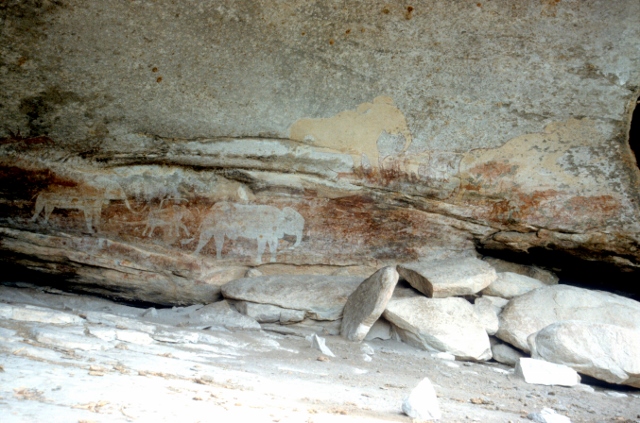
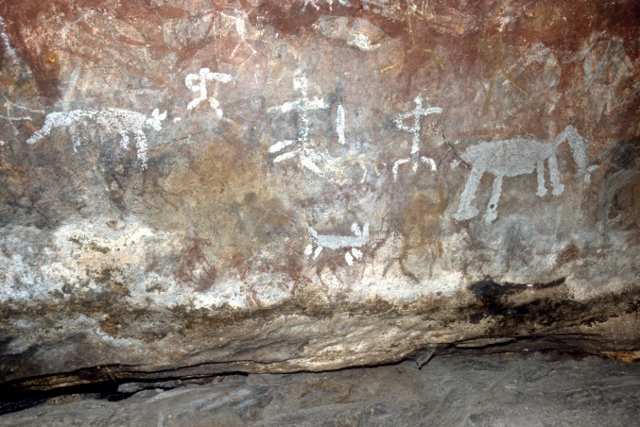
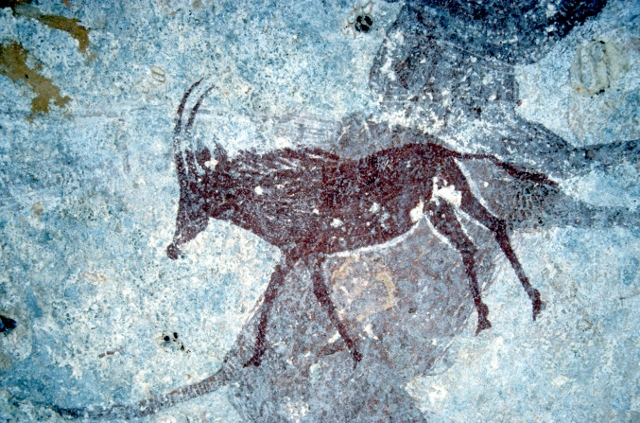
(here are more paintings of the Charewa Cave)
On the way back I went to the Mutoko ruins, remains of a stone settlement probably from the 14th Century, contemporary or slightly later than the most famous ruins in the country, Great Zimbabwe. There is not a whole lot to see here, a few platforms, a passage and a couple of walls, yet, this place is well signposted, there is a care taker, a real visitor’s book and even a small, modern office building which will be turned into a site museum. It is clear that the local population feels much more associated with the stone builders than with the rock painters.
next: to the Eastern Highlands

